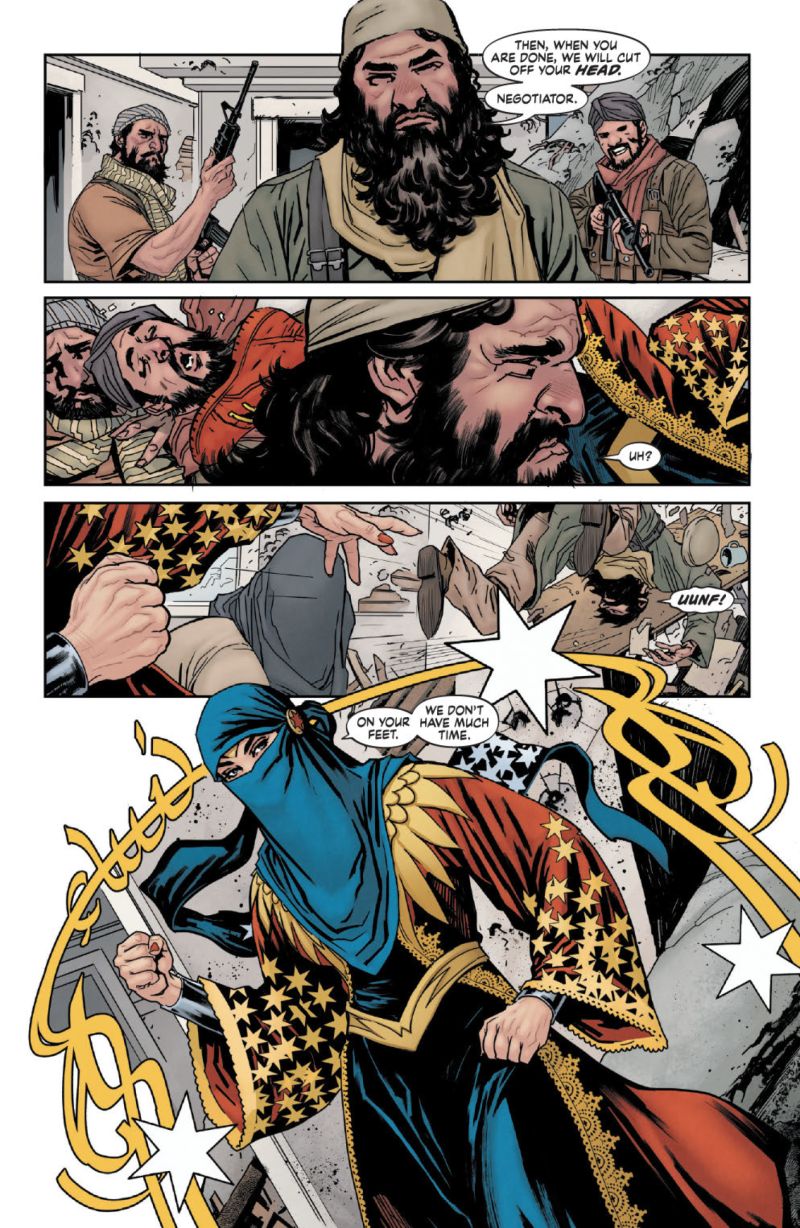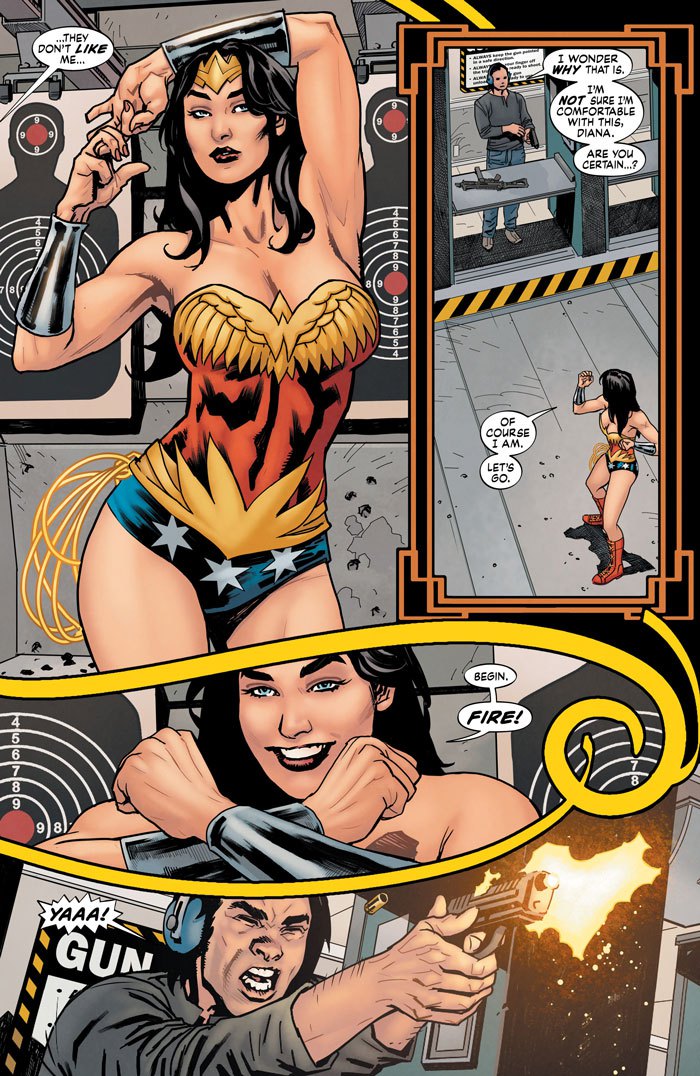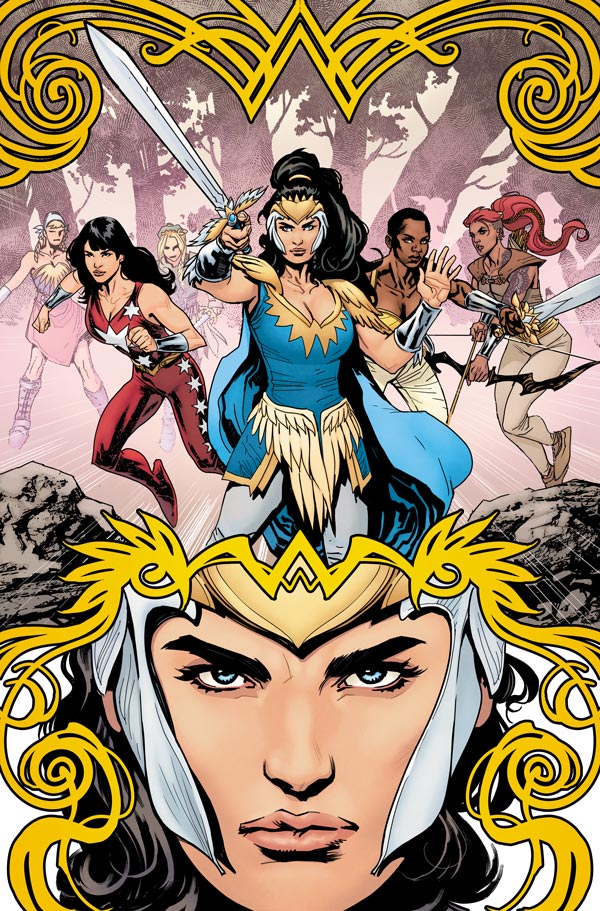[Editor’s Note: This review may contain spoilers]
Writer: Grant Morrison
Art and Cover: Yanick Paquette
Colors: Nathan Fairbairn
Letters: Todd Klein
Summary
Wonder Woman is living in “man’s world” now, trying to spread her ideals of truth and love. She misses home and sometimes feels like she doesn’t belong here and that her mission is lost on most of humanity. Yet on the outside she remains unwavering, continuing to fight for her values individual by individual. But new threats lurk around every corner ready to take advantage of Diana’s naivety about the world she finds herself in. Does Wonder Woman have what it takes to survive?

Positives
At face value, this book is a story about toxic masculinity that is all too present in today’s world, and yet, it accomplishes so much more. Morrison is not trying to write a direct commentary about how our society is or should be, but there are still so many elements that are applicable to the world we live in. Morrison’s true purpose seems to be to take on the concept of ideology. There are many different ideologies that are presented in this book in different, purposeful ways, and while some are more associated with evil attitudes and deeds than others, no ideology is labeled correct. Not even that of the Amazon’s.
The book starts with the invasion of Themyscira by Paula von Gunther and the Nazis who are swiftly defeated by the Amazon warriors. Morrison had a lot to say about the old Wonder Woman villain stating,
“I thought there’s a sadness to that character. In the original comics, Paula von Gunther, she’s classic Nazi super spy. She has a bunch of girls that do her bidding. But in the end, she willingly submits to the Amazons, and she’s taken, and she’s seen as a kind of success story for the Amazons because they managed to reprogram her.
So, we played with that again… It was that idea of, “Let’s see what happens when the Amazons actually apply the technology, and to see her being broken down.”
I find it quite horrific almost when you see the Amazons reducing her and taking away her sense of self. It’s kind of scary. So, I felt sorry for the character. This is a woman who’s just been controlled by everyone.”
Morrison accomplishes this commentary extremely well in the graphic novel. When Paula is defeated and submits to the Lasso of Truth, she realizes she was coerced into serving ideals she does not believe in and weeps. Yet instead of gaining free will and the ability to form her own ideals, she is taken to Improvement Island and forced to submit to the Amazon Code. They may represent values that we agree more with, but is this better? Morrison poses the question, but not the answer.
We are then introduced to this version of Dr. Psycho, another old Wonder Woman villain Morrison has slightly revamped for this telling. In Wonder Woman: Earth One Vol. 1, we are introduced to Hercules, who represents a much more archaic version of toxic masculinity, a more raw and basic form where women are lesser beings who are meant to serve. That is less common than many forms we see today and Morrison comments on how ideologies can evolve through the introduction of Dr. Psycho, a character with subtler ways of serving the ideology of toxic masculinity.
Dr. Psycho prides himself as a conqueror and says that all women can be broken. Its not a comparison of superiority or inferiority for Dr. Psycho, but rather a quest, feat, or accomplishment for him. At the same time, just as with Hercules, women are not individuals for Dr. Psycho, but rather a collective “they.” Morrison had this to say about the character:
“The Doctor Psycho sequence where he sits and talks to Diana [Wonder Woman] is actually based on the script used by pick-up artists,” Morrison said. “Even the movements he makes — he mirrors all her gestures, he makes these casting off gestures every time he talks about something that he wants her to perceive as negative.
I think there are natural sociopathic narcissists in the world who are really good at it, but there are also nerds who thought, ‘I could weaponize this. I could learn all of these techniques — I could turn it into a set of instructions that will always work.”
The character comes across exactly as Morrison seems to have intended, and in the end, his skills of manipulation and mindset of controlling and manipulating others are not necessarily defeated, which masterfully reveals how powerful persuasion, manipulation and changing someone’s ideology can really be.

The real hero of this volume for me, however, is Beth Candy. Beth shares much of the same ideology Wonder Woman preaches. Beth wants to spread truth and love, she is comfortable with her own body image, and she thinks that no woman should be afraid to be who they are. These are beliefs that she and Wonder Woman share, and yet Beth is very put off by Wonder Woman’s method and attitude. Beth believes that the desire to cause change is noble, but acting to impose it on others is just as wrong as some of the ideologies she disagrees with. Wonder Woman wants to see change happen as soon as possible and fights every day convince as many people as possible that the Amazon code is the right way to live. Beth believes that change will happen “one day at a time” and fights for others to choose their own, healthier values without imposing hers upon them. Ultimately, Beth is the one to defeat Dr. Psycho because her beliefs are rooted in her core, and not in a community like Wonder Woman’s are, because this version of Wonder Woman has not yet made her own ideals. Beth has, and that is what makes her a hero.
I’ve spent a lot of time on Morrison’s masterful storytelling and character development, but I refuse to ignore Paquette’s exquisite artwork and visual storytelling. Each character has facial expressions and gestures that add so much to their development, especially Dr. Psycho, and all of it is very intentional. The most unique and masterful form of visual storytelling in this book, however, is the paneling. Each major character has their own unique panel border that changes and distorts as their ideology does.
When Paula first invades, her border is a rigid black and white and always topped with a Nazi-related emblem because that is how she see’s things. The Nazi ideology is superior and all others are inferior, and there is no room or reason for change. It is just as black and white as the ideology. When she is “reformed” under the Amazon Code, the border remains the same but the white morphs into yellow because the Amazonian Ideology is now what is being forced upon her. Hippolyta’s border is a very ornate, very well defined gold that swirls around her images like crown. She is a primary architect of the Amazon code, so it makes sense that it is so well defined and almost forceful, invading other panels around the page. Dr. Psycho’s panels are brown, rigid square lines. They surround panels multiple times over and almost cage and entrap the panels to the page. They represent a controlling, oppressive, and dominating personality, and when Wonder Woman begins to fall under his influence, her loose, flowing gold borders that sometimes seem to represent the Lasso of Truth itself begin to be trapped by those rigid lines. It truly is visual storytelling and symbolism at its finest.
Negatives
This is not as much a negative as it is a question. I can’t help but wonder why some of the themes, characters, and actions in this novel so overt. I might have kept elements subtler so that readers could identify the values behind them on their own. Then again, ideologies are rarely ever subtle.

Verdict
A masterful narrative that transcends the comic book genre and has a lot to say about society and ideology.
